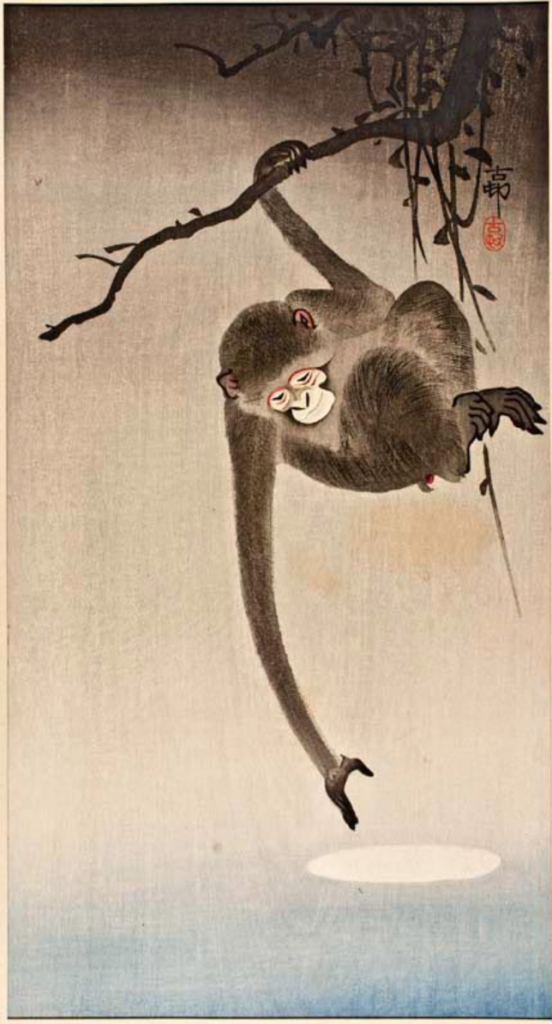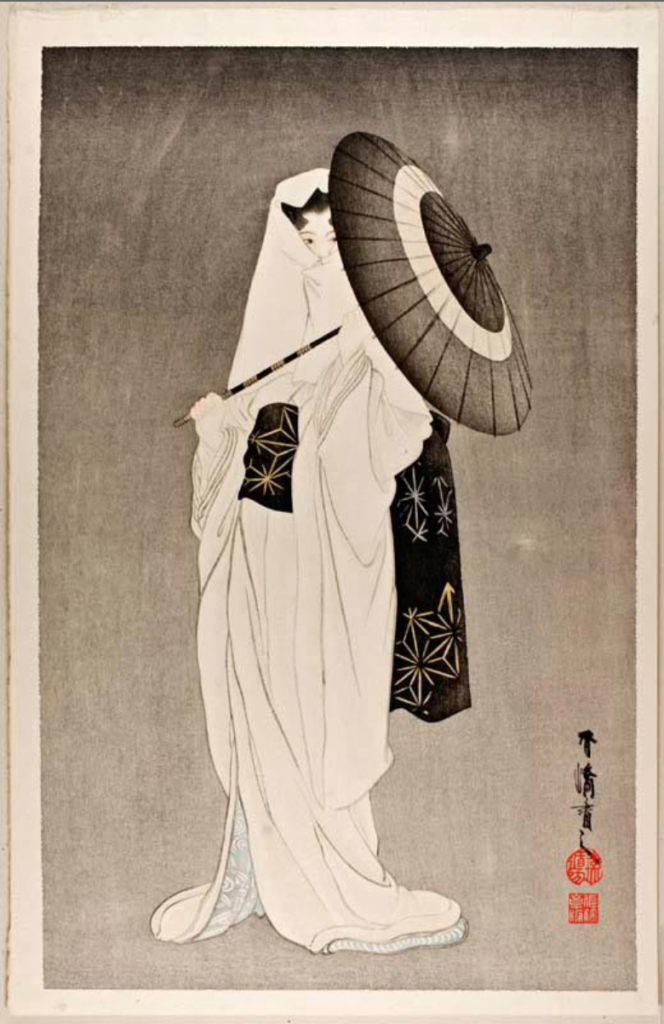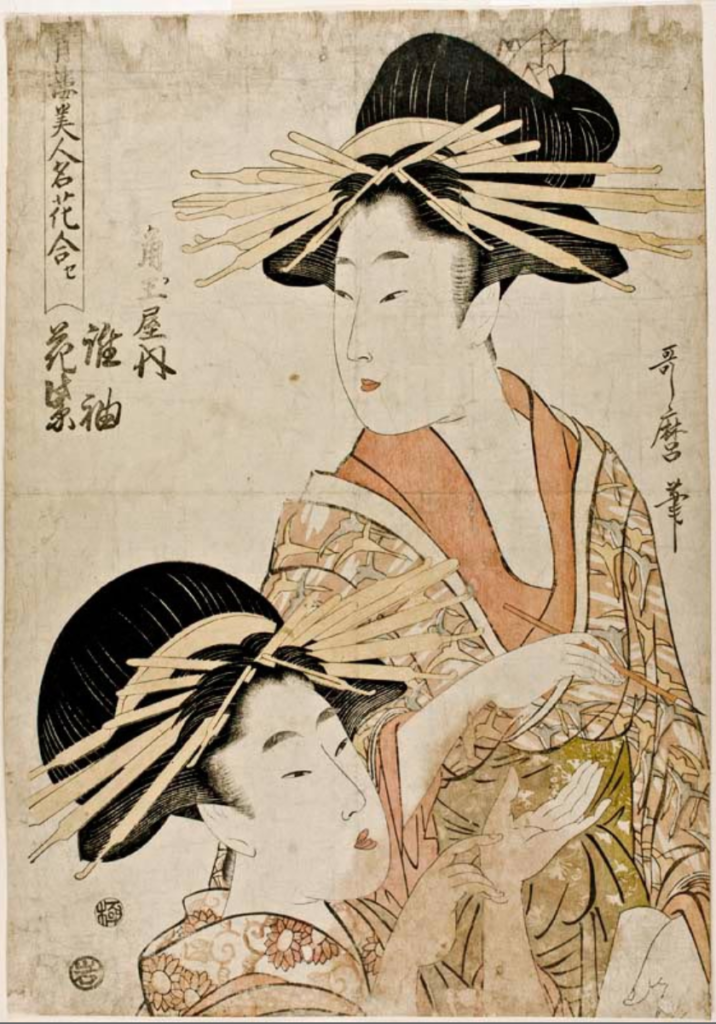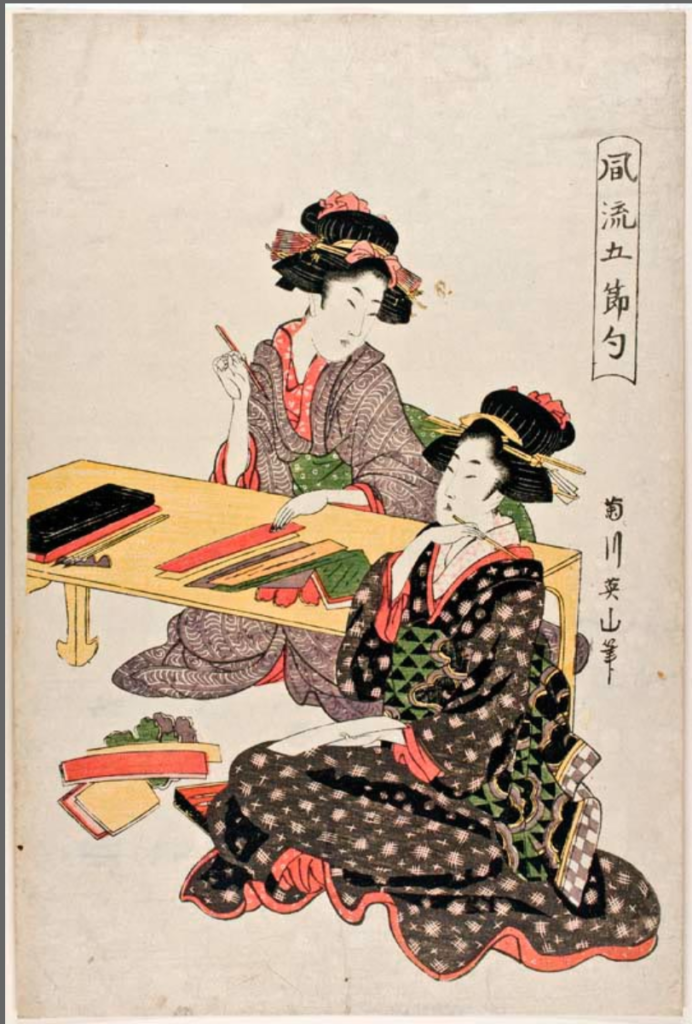What are Japanese Woodblock Prints?
Most people probably know Kanagawa Oki Nami Ura (The Great Wave). This is one of the most famous Woodblock Prints and was done somewhere between 1820 and 1831. Japanese woodblock printing is a technique that has been used since around the eighth century and started as a way to dictate Buddhist scriptures. During the first industrial revolution, new technologies were created making the process of creating the prints easier, allowing life during the Meiji and Edo period Japan to be documented in vivid color and artistic design. Actors, courtesans, noblemen and women, and architecture were all beautifully depicted and distributed across Asia.
What is the process of making Woodblock Prints?
Four different people are needed to fully execute a print (a designer, an engraver, a printer, and a publisher). First a designer would first draw an image onto washi, (a thin yet durable type of paper). The washi would then be glued to a block of wood, and the engraver would carve the image into its surface. The printer would then apply ink and a piece of paper would be placed on top of it. Lastly, a flat tool called a barren would help transfer the ink to the paper. Despite the initial difficult process, after a piece was finished, it could be copied by the thousands.
My Exhibition
I specifically chose these Woodblock prints because of their lack of a background. Each of these prints has just the image as the main focal point, drawing in the audience to focus intensely on either the animal or Geisha. Each of the figures has very specific and different characteristics to them showing the different emotions each artist wanted to display. Additionally, the animals show a more playful and humanistic side than the women, as they are all statue-like and don’t show much movement. Throughout the exhibition there is gradually more color added in the prints, ending and beginning with animal prints done by artist Ohara Koson, showing the juxtaposition between the women and the animals.
Curator
Charlotte Becker
References and Bibliography
All references are listed on each of the images and journal reflections respectively




